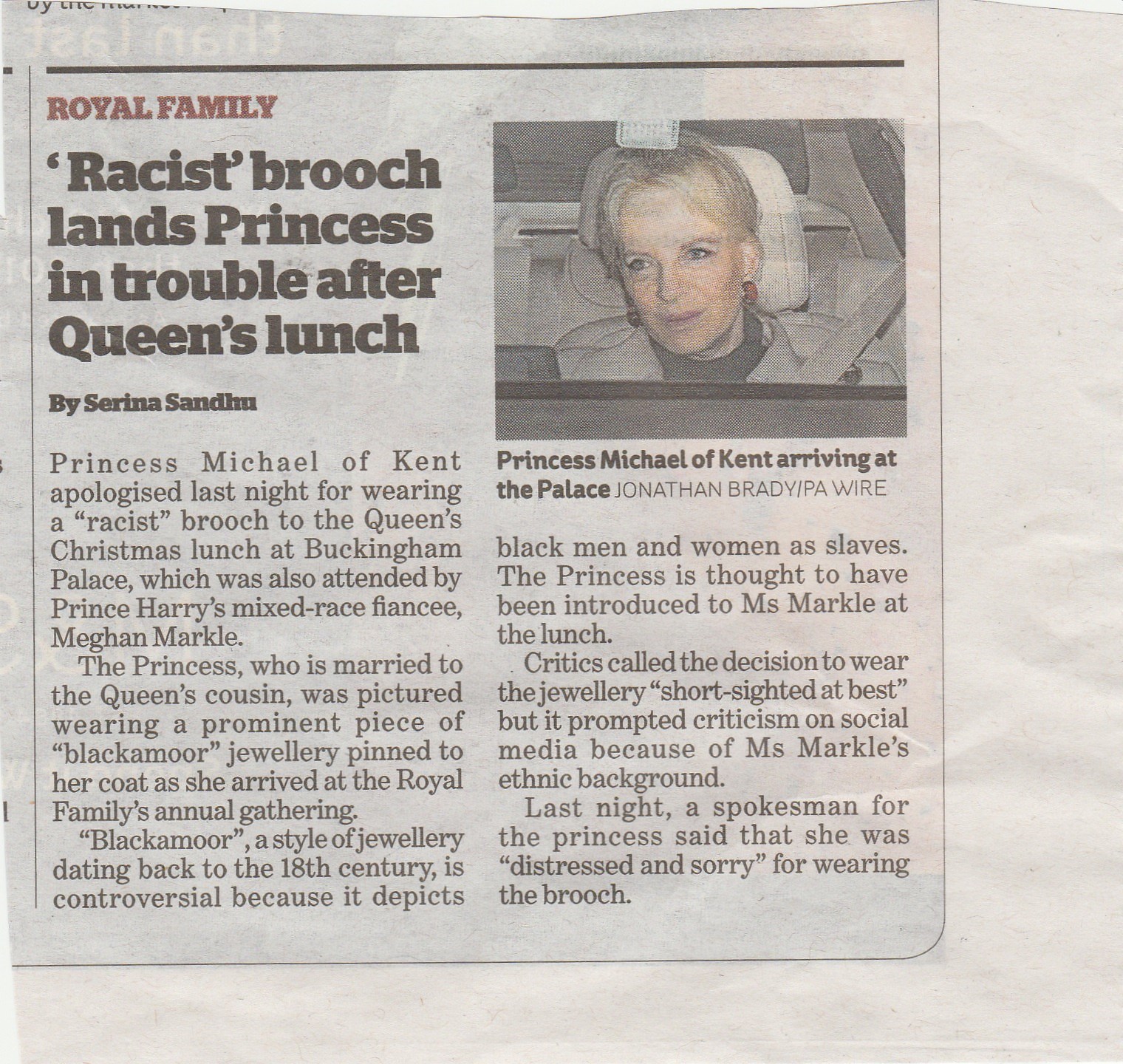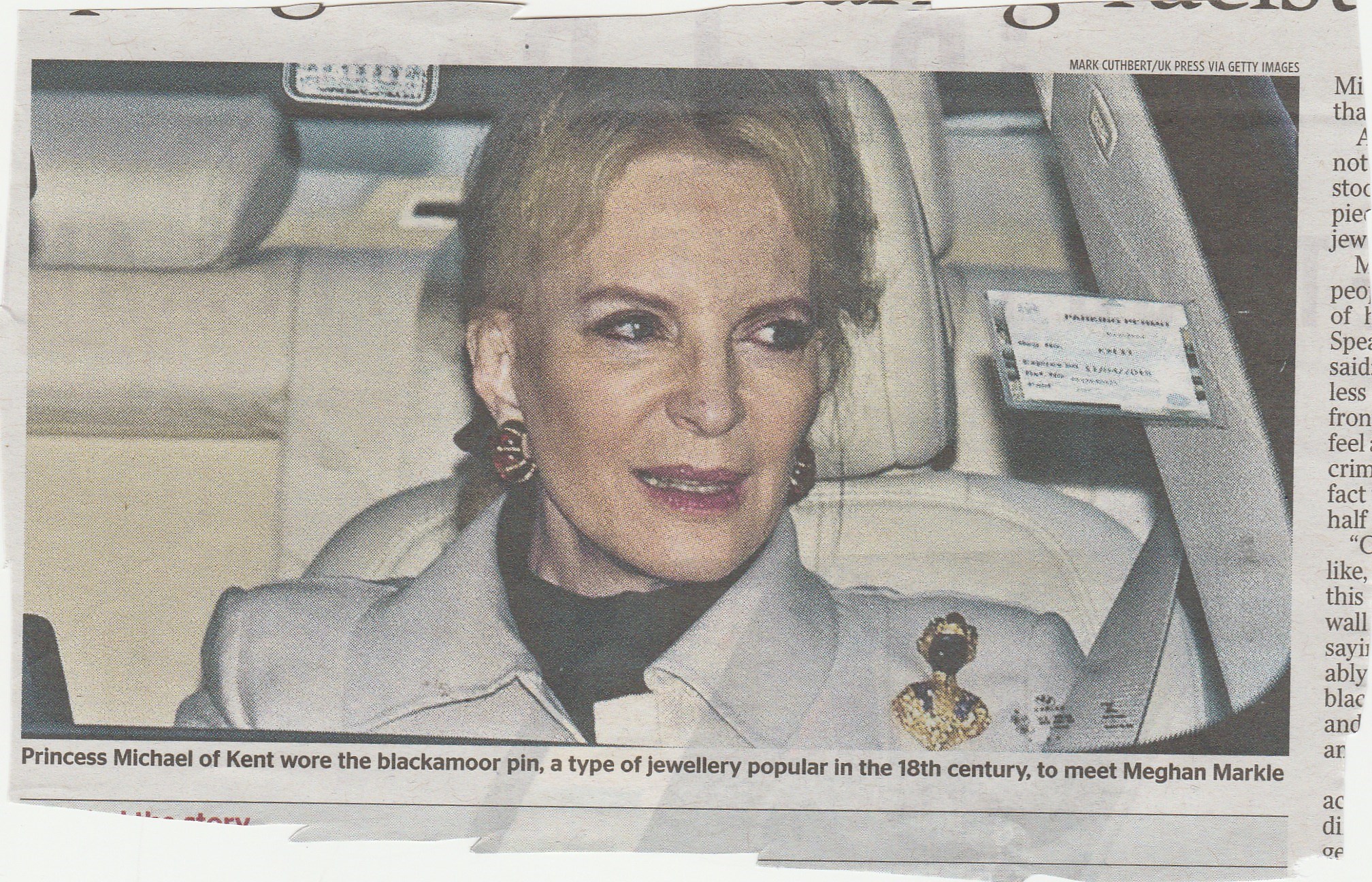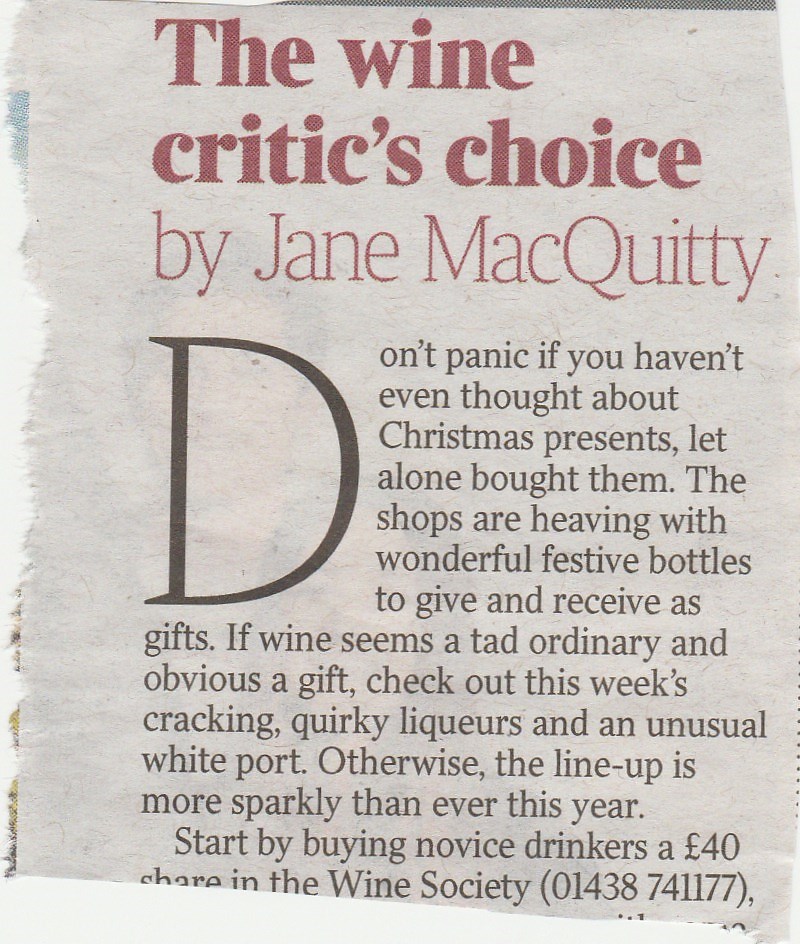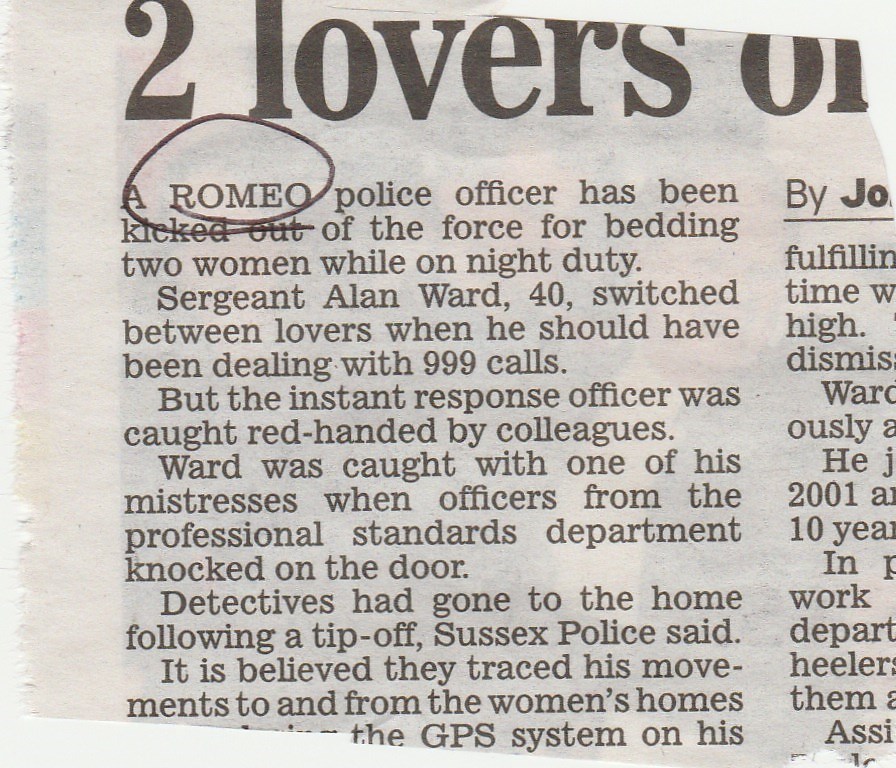 i newspaper, December 23, 2017
i newspaper, December 23, 2017
Can anyone explain this thought process? ‘Here is a story concerning Princess Michael and a brooch. I will choose to illustrate it with a picture in which the brooch is covered by a seatbelt, not one of the many in which it is clearly visible.’
Here is an example:
 The Times, December 23, 2017
The Times, December 23, 2017
This piece also contains an example of what can happen when paragraphs are run on to avoid a short line at the top of a leg (called a ‘widow’ in my day). Paragraphs denote that the content is related, and in this case it looks as if the topics of slavery and Miss Markle belong together. This is unfortunate. The appearance of the page should never take precedence over the words. Here, it would been a simple matter to add extra spaces to fill out the top line of the second leg and still start a paragraph with the next sentence.
 i newspaper, December 22, 2017
i newspaper, December 22, 2017 The Times, December 19, 2017
The Times, December 19, 2017 The Times, December 20, 2017
The Times, December 20, 2017


 The Times, December 16, 2017
The Times, December 16, 2017 Daily Express, December 14, 2017
Daily Express, December 14, 2017 Daily Express, December 14, 2017
Daily Express, December 14, 2017 i newspaper, December 15, 2017
i newspaper, December 15, 2017 i newspaper, December 15, 2017
i newspaper, December 15, 2017 The Times, December 15, 2017
The Times, December 15, 2017 The Times, December 14, 2017
The Times, December 14, 2017